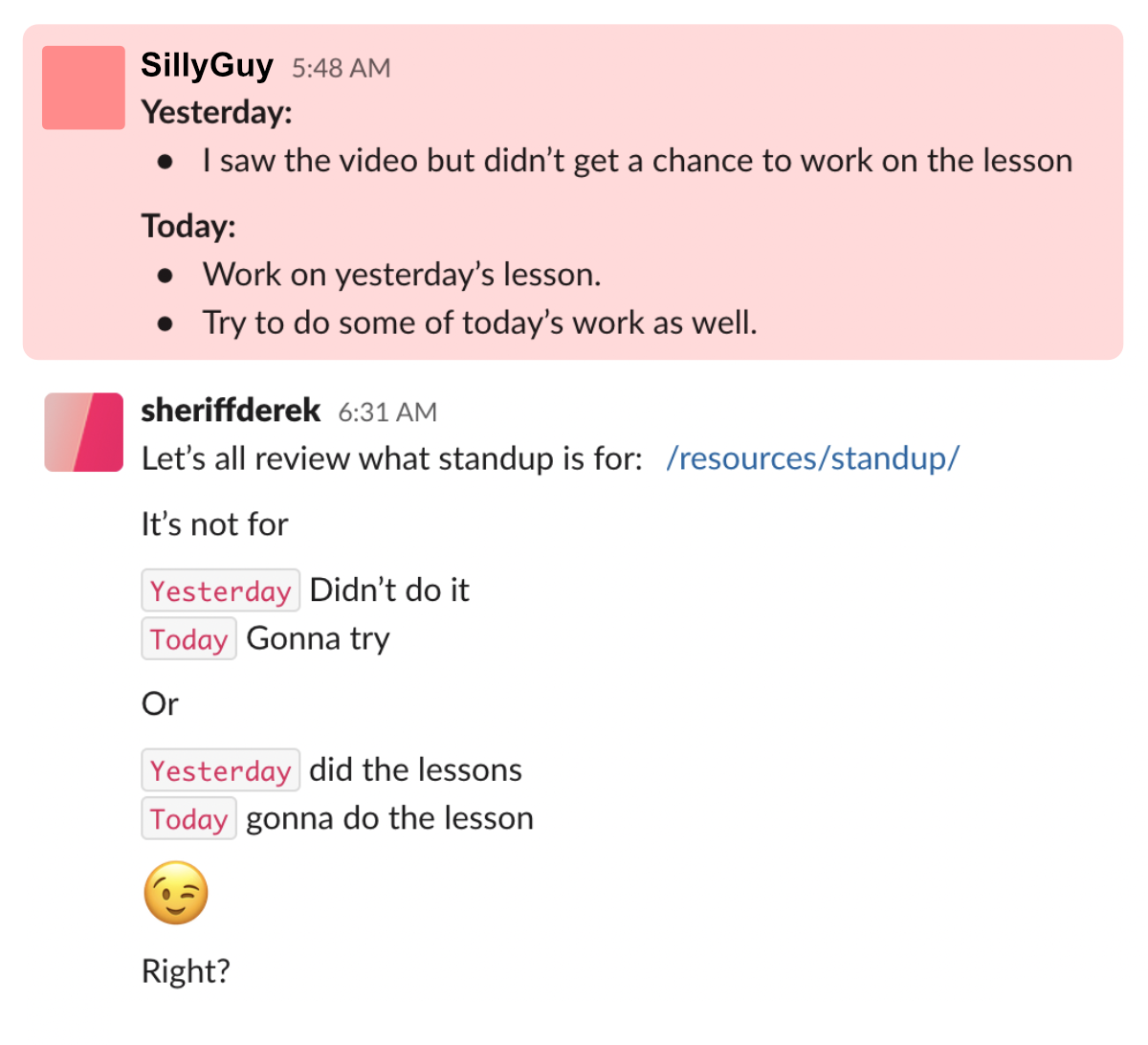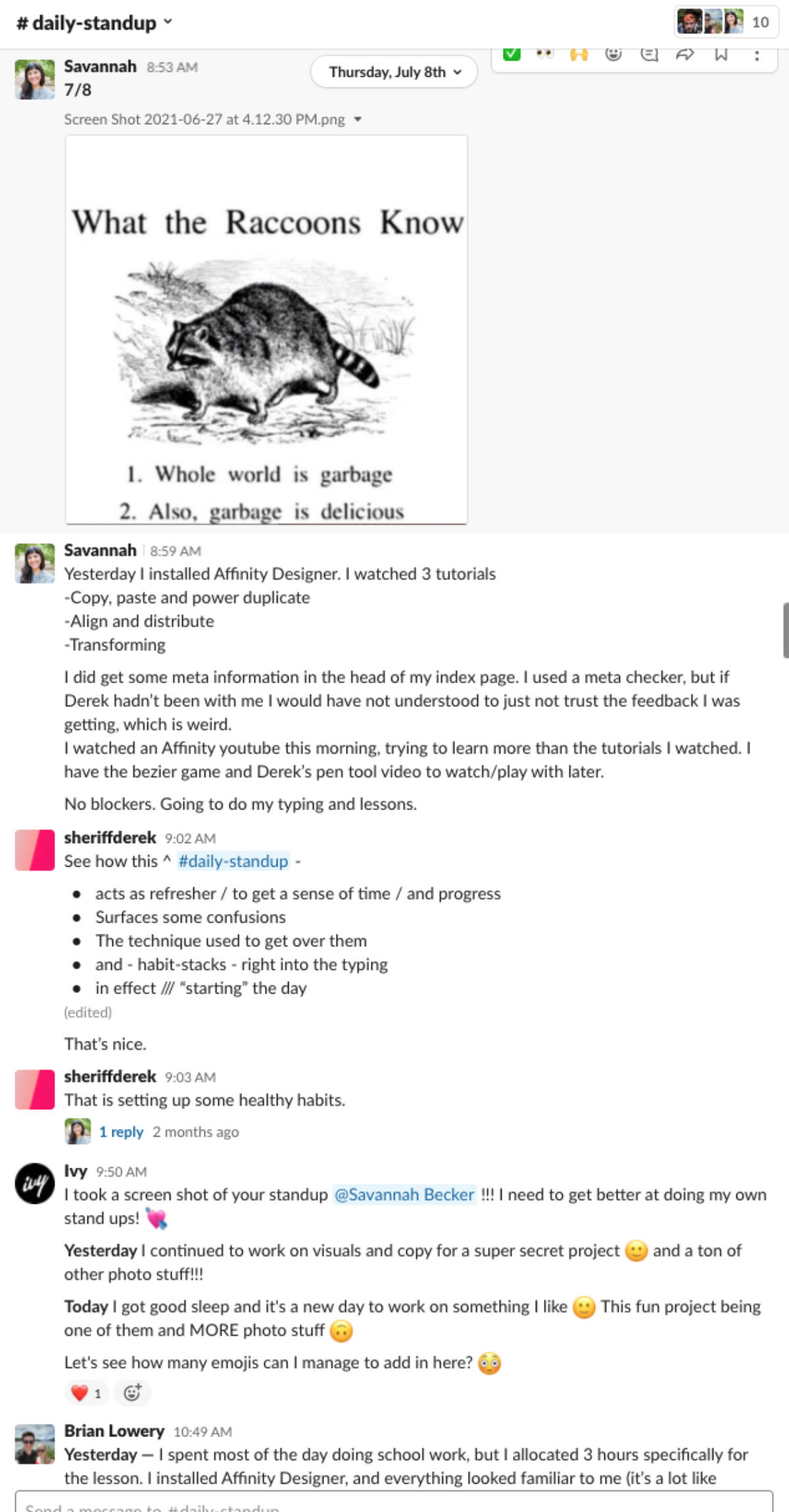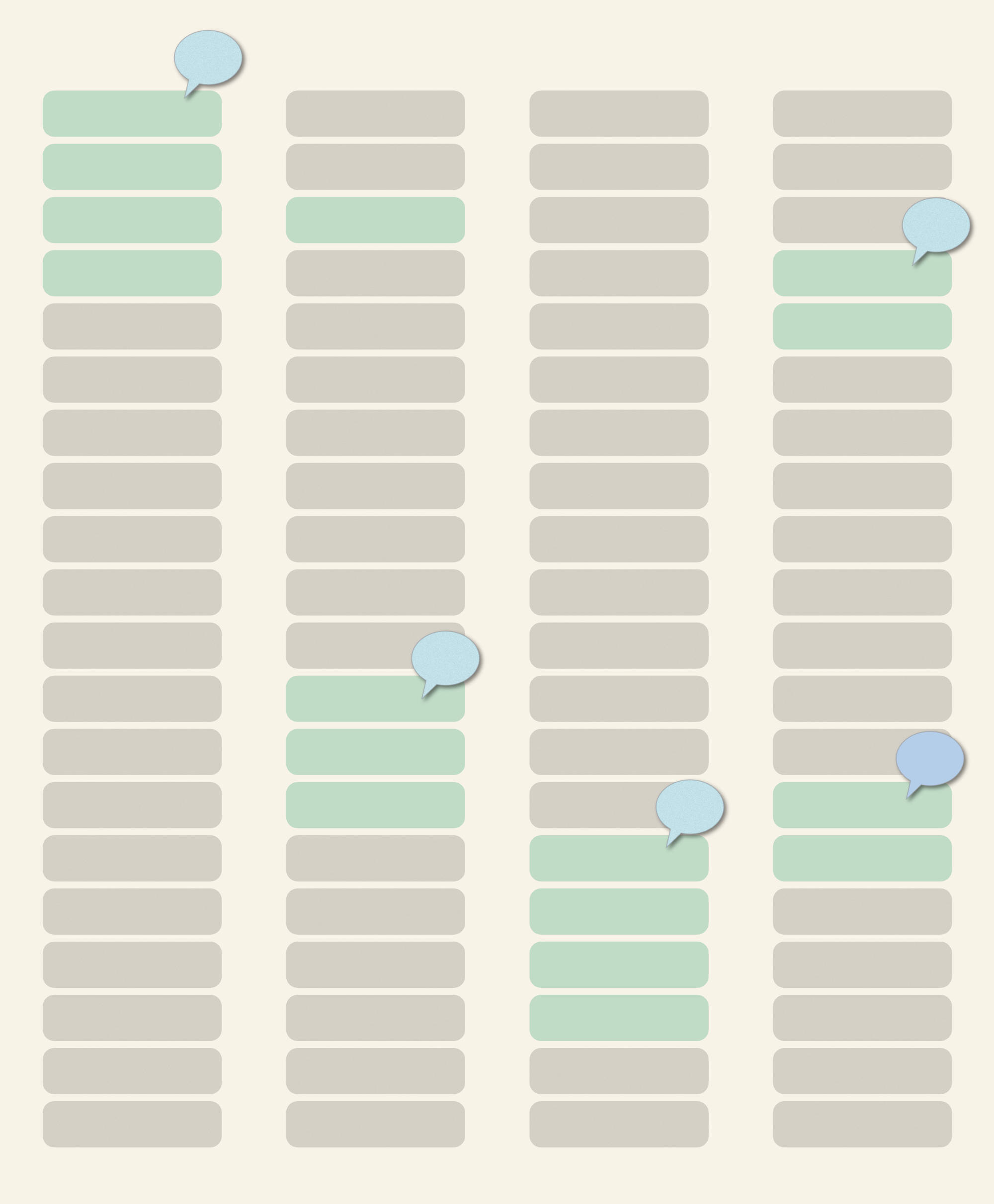Stand up (what is it)
Introduction
What did you do yesterday? What are you going to do today? Are there any blockers?
What is “stand-up?” Why do we do it?
Key
concept
Stand-up
“A stand-up meeting (or simply “stand-up”) is a meeting in which attendees typically participate while standing. The discomfort of standing for long periods is intended to keep the meetings short.”
When you’re on a design or software development team, it’s hard to know who’s doing what – and what is getting done. Going down the line and asking everyone on the team “what is your status” can be tough. Well, to make it faster (hopefully) – we can all “stand up.” Supposedly this is because it’s too tiring to stand – so, people are swift.
WikipediaHere are the 3 classic questions (prompts)
These are what they’ll ask at the real software engineer type job. We’ll be doing things slightly differently.
-
What did I do yesterday?
-
What am I planning to accomplish today?
-
What obstacles are impeding my progress? (“blockers”)
Ivy and Derek talk about why standup is much more important than it may seem
But we’re not in the same office!
That’s true. We also have different schedules. If we had it our way, everyone would get up and do their standup at the same time – and on video, but there’s never been enough overlap for that to work. So! We’ll do it asynchronously. (not synchronously/at the same time)
But aren't we all doing the same thing?
At the beginning of the course, we’re ALL “working on the lessons.” Later in the course, you’ll have unique projects and tasks. So, until further notice – use this framework:
-
What is one thing you learned yesterday?
-
What is something that was confusing? Or an idea you had?
-
Is there anything you need help with today?
-
Is there anything you are excited to learn?
Measuring things
Further down the line, tasks and time need to be measured. “Learn more stuff” isn’t measurable. That being said, not everything is “finishable.” Either way, there should be something to show.
For example: “I’m going to do 2 gray-scale composition studies for 40 minutes each.” Great. Let’s 👀 them.
Or: “I’m going to create some data objects and loop through them to practice PHP.” Great. Let’s see it when you’re done.
They don’t have to be finished but they need to be measurable. If you can’t measure it, then you won’t know if it’s getting better. You aren’t accountable if there’s nothing to measure.
In real software development, the team will collectively assign a number to the amount of work the tasks represent during standup. Over time, this will be averaged out and the team can plan longer timelines. You might be given a 2, 3, and a 3 for the day – or half of a 10 ‘sized’ ticket. But don’t worry about all of that “Scrum Master” stuff until you work in a place that does that.
What are the goals of stand-up?
The main goals for standup – (in this class) (at this stage) are:
Make sure you don’t get all weird and reclusive. Even if you just pop in and say “I didn’t do the assignment” – you’ll feel better just getting it out in the open. It’s to keep things transparent.
Get a chance to show your vulnerability and ask questions – and see that other people are all also asking questions – so you aren’t alone / or going to be judged. Everyone is learning. That’s the normal state.
Based on your blockers (which there basically always are – but no one admits) – we can help you get unblocked or pair you up with another team member and work on it together – so that you don’t spend 10 hours totally wasting your time and not learning anything and burning out for absolutely no reason at all.
Feel free to make a video standup – and post it too.
“Blockers” are not laundry – or things we cannot control. (If you are complaining about laundry – you’d better show us that wash-board).
“Blockers” are things that are stopping you from completing your tasks. If you can’t figure out how to install an application, then – it’s going to stop you. If you don’t understand one of the programming concepts – it’s going to stop you. If you aren’t using your time wisely – it’s going to mess you up – So!!! We can help with those things.
Rules of standup:
We wrote the outline above – but there are some formatting details – specific to Slack.
-
The first person of the day shalt put the date in bold and some funny image to break up the days visually – and for fun.
-
Keep it fun. Tired people talking about how horrible “Mondays” are – aren’t fun.
-
Then – in a separate message, write your standup.
-
We do VIDEO standups on Monday, but you can do them any other days you want, too. : )
-
If you aren’t the first person – then just fall in line after the image of the day.
-
(should take 2-3 minutes MAX)
-
Keep it short and succinct. It’s good practice for that.
-
Write it down, first – so you have a little prompt already. : )
Bad standups

One of our best (and nicest) students wrote this standup.
Standup all stars

One of our best (and meanest) students wrote this standup.
The more standups you do, the more money you’ll make – and the more people will like you. It’s just a fact. Consider that you are preparing for an interview. Enjoy it!
The goal of standup is to empower you and help everyone do their best
Got your own ideas for a stand-up framework? Great! Try them out and tell us about them.
When should I do my standup?

Here are some arbitrary blocks to represent the parts of the day.
Everyone has a different schedule. What is yours like? When is the best time for your standup?
Video standups (on Mondays)
During the first part of the course, we’ll be doing video standups on Mondays. (these are mandatory!)
Later in the course, we’ll add Thursdays as well.
And at the end of the course, we’ll be doing them every day.
We’d also encourage you to do one every day starting today! Why not? The more you practice articulating yourself, the better you’ll do in interviews.
Write out your standup – and then just present it concisely with your face! It’s fun.
Changing your thumbnail

If you’re shy, then having an awkward face in your video’s default still image isn’t going to help make it fun.
It turns out you can choose a thumbnail after the fact.